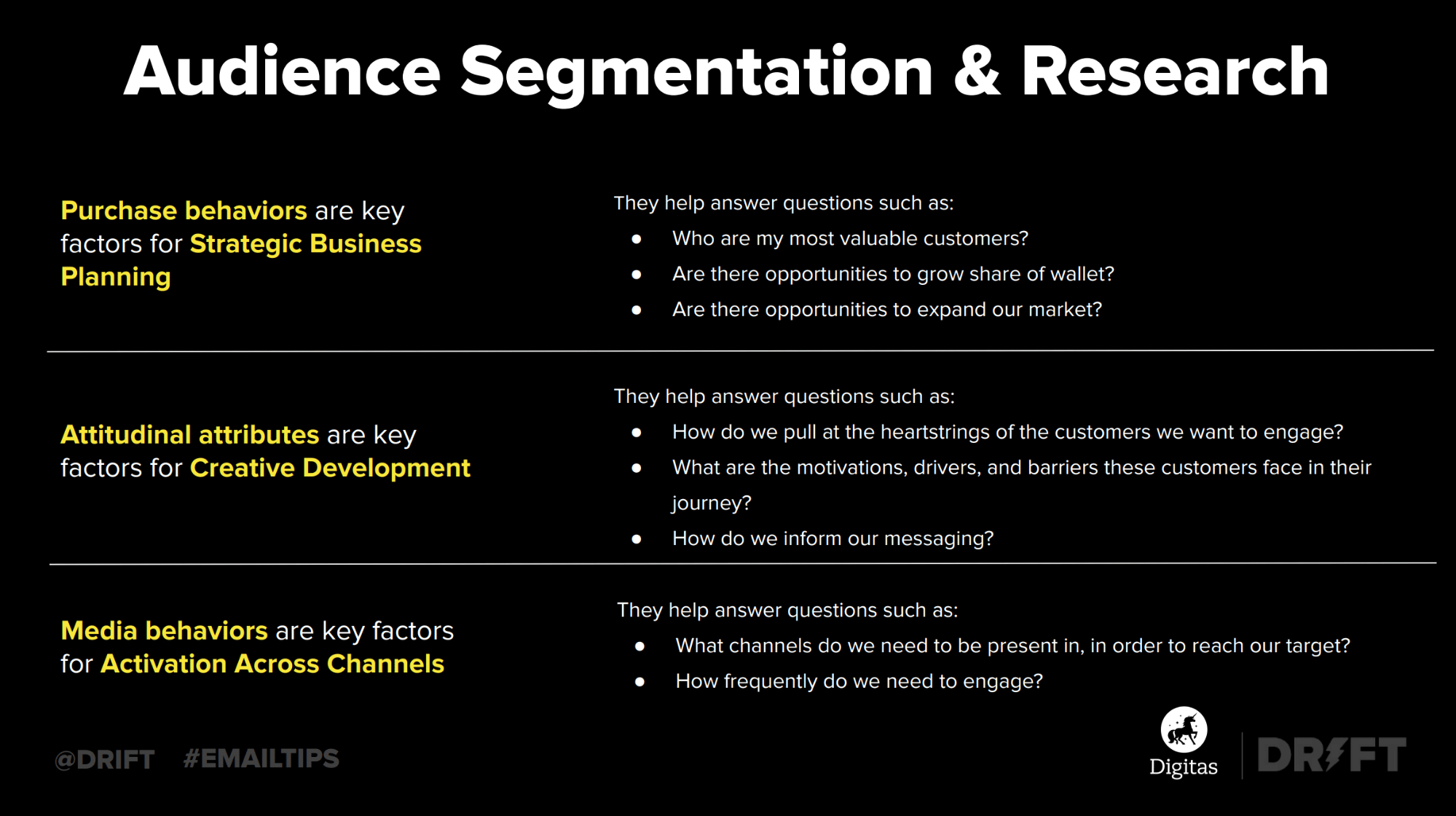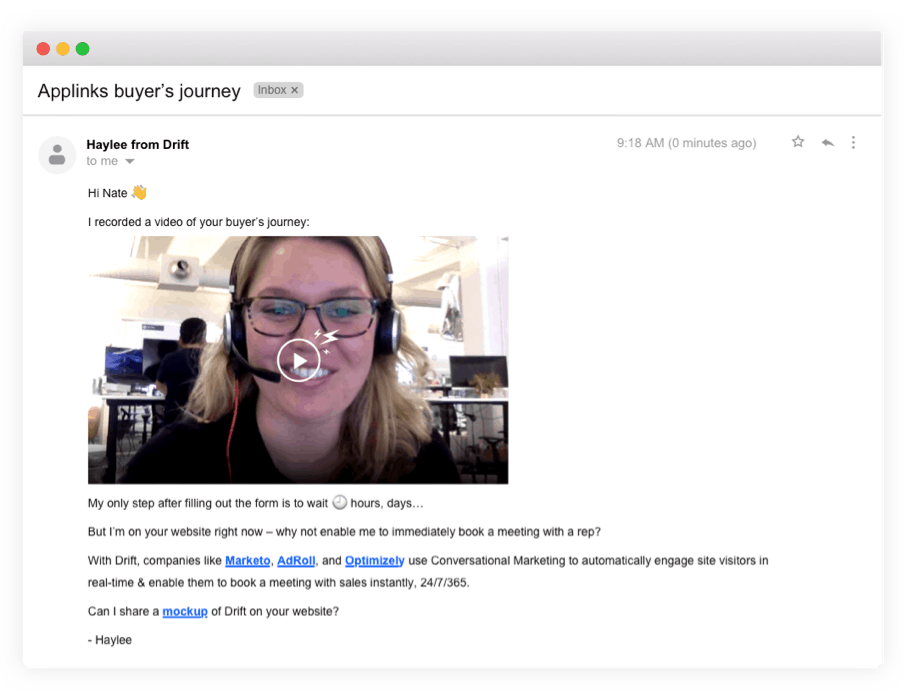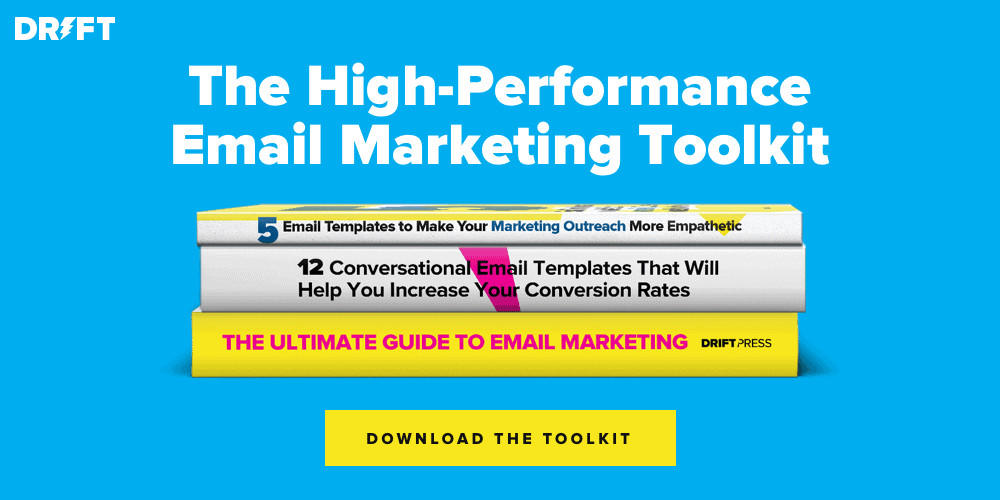I love a good marketing hack.
But not everything can be solved with a simple hack.
Yes, there are tweaks that can improve email opens, clicks, and response rates. But one great email does not a marketing strategy make.
To create a high-converting email marketing program – one that delivers consistent results and engagement – you have to go a little deeper.
That’s why I’m sharing these five best practices.
Sourced from our High-Performance Email Marketing Toolkit, these strategies are the best way to get more mileage out of your email marketing program. Check them out 👇
1. Clean Up Your Email Database
Database hygiene isn’t the sexiest email tip, but it’s probably the most impactful.
Database decay is a real problem for marketers. According to Informatica, more than 30% of the data in your database decays each year, and that’s only accelerated in 2020. That’s alarming considering the money marketers spend on data. In 2019 alone, marketers spent $15 billion on data.
Having a healthy database is important for many reasons, including campaign performance, deliverability, obeying privacy and data compliance laws, and sales execution. Just think about the time your sales team spends prospecting based on bad data.
So, how can you keep your database up-to-date and healthy? Here are some suggestions:
- Segment based on email validation status. This refers to “signs of life engagement.” Regularly purge invalid emails from your database, unsubscribe in real-time, and weed out people who haven’t been active in a year or more. Leads that have been inactive for long periods of time are unlikely to re-engage with you in the future, not to mention the valuable (and expensive) space they occupy in your marketing automation platform.
- Merge duplicates. Look at contact and lead objects, and compare public ESP addresses against business email addresses.
- Enrich existing records. Don’t just leave this up to sales. There are plenty of tools out there to help with database enrichment. Accurate enrichment data lets you build segmented lists and deliver more targeted email marketing programs; based on current job titles, locations, and more.
- Double down on active contacts. Database hygiene isn’t just about email deliverability and inactive leads. Connect multiple data sources to provide a fuller picture of the actions your best leads are taking. Then focus your enrichment efforts on that group. This enables you to deliver more contextual and personalized email experiences and better define key touchpoints in your customer journey.
You can check out even more database hygiene best practices here 👉 How Marketers Can Fight Back Against Database Decay
2. Restructure Your Email Nurture Program
You want to move buyers through your marketing funnel as quickly and efficiently as possible. And you also want their buying experience to be streamlined and informative.
Structuring your email nurture like your funnel is a great way to accomplish both.
Not only does this help you determine what messaging, offers, and CTAs to serve up, it also gives buyers a reason to come back for more.
Tracking your email marketing performance at each stage also lets you see how effective these messages, offers, and CTAs are at engaging the right buyers at the right time.
3. Segment Your Email Audience Further
Just like segmenting target accounts for your account-based marketing program, segmenting your email marketing is a good way to boost performance.
Start segmenting based on firmographic information. Then filter in other factors – like “why” someone decided to download an eBook.
In a recent webinar with Drift, the SVP Connections Strategy at Digitas, Melissa Berger, discussed how segmentation through behavioral and attitudinal inputs can be layered on to add even more depth to an email program 👇

There are a lot of things you can do with segmentation. Try to experiment with different lists, and see what works. This will make it easier to nail down my fourth tip 👇
4. Keep Email Personalized & Conversational
Today, personalization is the gold standard in marketing – and the data proves it.

There are many different ways to personalize emails. We already discussed two: segmentation and structured email nurture.
And yes, personalization tokens do allow for name drops. But that’s no longer enough to impress today’s buyers.
To create a great email marketing program, you need to make your emails personalized and conversational. That means the best personalized emails:
- Make the recipient the star
- Add value upfront with relevant CTAs
- Are written like you talk
- Ask questions that spark a conversation
Here’s an example of a great conversational email from our book 7 Cold Email Templates Your SDRs Should Steal 👇

There’s a lot to love in this email.
First and foremost, we get to see the rep’s face! Using Drift Video, sales teams can drop in GIFs that lead right to a video. This video includes a chat, and reps are notified when someone is watching their videos in real-time.
Reps have reported that using Drift Video in emails has increased engagement by as much as 3x.
From there, the email is casual, to the point, and provides a ton of value upfront. Who wouldn’t respond?
Our VP of Demand Generation, Kate Adams, shared the secret to getting her to open cold emails here 👉 This Is What It Takes To Get A VP Of Demand Generation To Respond To Your Email
5. Create a Testing & Data-Driven Culture
HTML or plain text?
White background or blue background?
Tuesday send or Wednesday send?
This offer or that offer?
👆You have a lot of questions when it comes to email. I could give you my two cents on what does and doesn’t work. But the best way to find what works best for your business and your buyers is to test.
And test again.
And then test some more.
Because an email that worked one month may not resonate the next. That means your email marketing program requires constant fine-tuning to ensure optimal performance.
Here’s what we’re always testing at Drift:
- Subject lines
- Send dates and times
- Copy, layout, and design
- CTAs
- Audience segmentation
To test these areas, it’s important to use performance tracking and UTM parameters. UTM parameters give you a better, more accurate depiction of attribution for different campaigns and how those campaigns perform across channels like email.
Be strict on what benchmarks you’re using to measure performance. Start by looking at historical performance for opens and clicks. Then dig deep into the nurture tracks that result in meetings and pipeline to swap out emails that don’t make the cut.
Finally, make sure you’re sharing email best practices among your marketers on everything from subject lines to copy length to CTA colors. We only get better together!
Final Thoughts
To recap, here are the 5 best practices (not hacks) to help you improve your email marketing program today:
- Clean up your email database
- Restructure your email nurture to match your marketing funnel
- Segment your email audience more systematically
- Make emails personalized and conversational
- Promote a testing and data-driven culture on your email marketing team
You won’t be able to do these all overnight. So be patient – and be receptive to what the data tells you. Data doesn’t lie. But your ego might.








